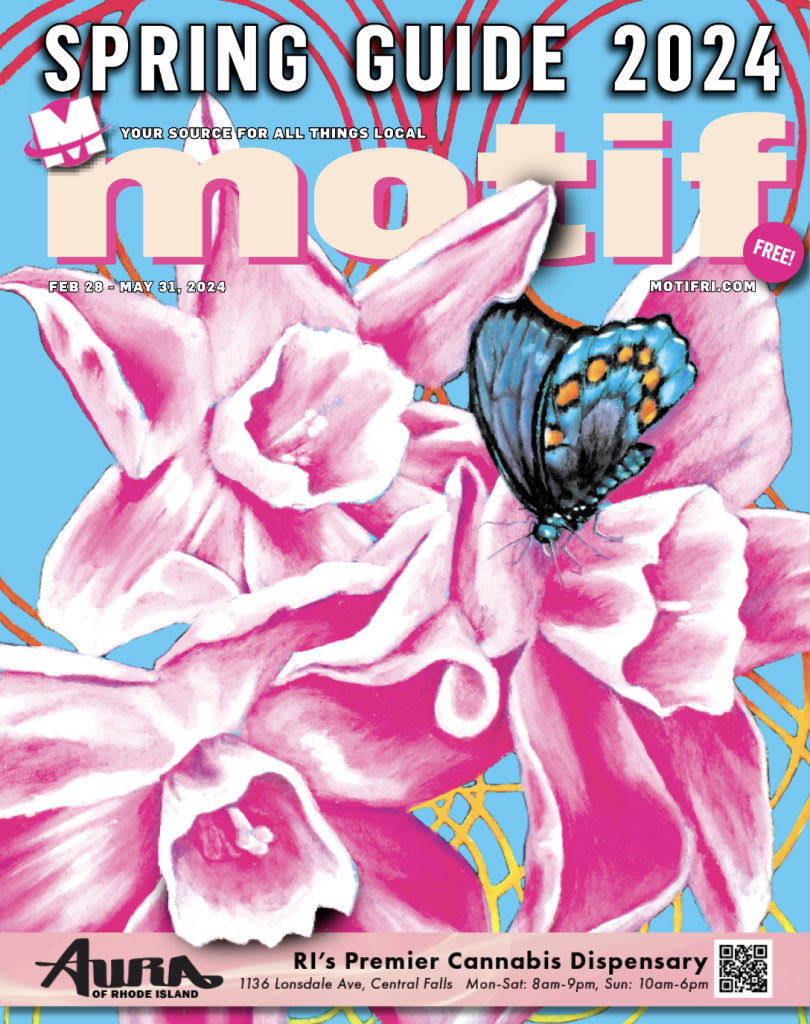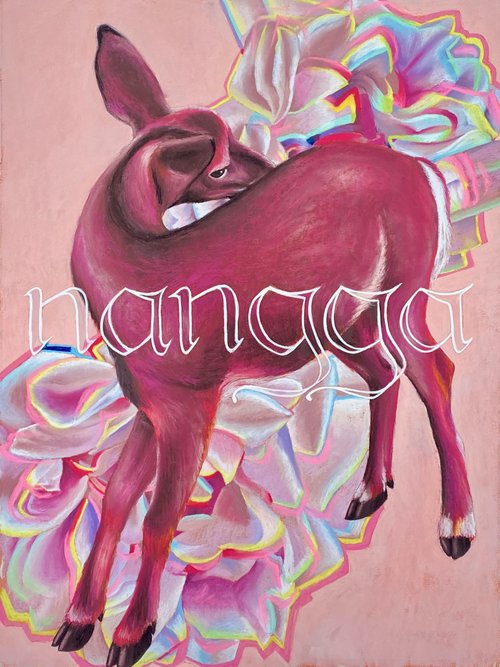
A cyan sky swirls luminescent around pink daffodil trumpets and petals that curl and stretch skyward as a pipevine swallowtail comes to rest, its metallic blue hindwing shimmers above its characteristic orange dots. Yanggen un tånom, siempre dokko, created using soft pastels by artist Fu’una, is Chamoru for: If you plant it, it will grow.
“I enjoy the process of finding a Chamoru title for my paintings because I like any excuse to browse for the right words,” says Fu’una. “Chamoru is the language of people indigenous to the Mariana Islands. Language contains culture, and the loss of language diversity represents the loss of indigenous knowledge and culture… I do what I can to keep our words in people’s mouths… If there are any Chamoru out there reading this who have always wanted to learn but never started, I want to encourage them to take that step and start their language journey… It’s never too late to start connecting with our ancestors. There’s so much that was taken away from us through centuries of colonization, but there is still wealth in our language.”
The name Fu’una comes from the Chamoru creation story, which depicts two sibling gods — Fu’una and her brother Puntan. Fu’una takes apart Puntan’s body and uses it to create the earth, the sun, and the moon. Afterward, Fu’una adds her own body to the earth and from this hallowed ground, the first people are born.
“I wanted my artist name to reflect my Chamoru heritage and it felt fitting to name my creative persona after our creation goddess. I love this story because it demonstrates the power of women in our matriarchal society.”
Rhode Island-native Kameko Branchaud (aka Fu’una) attended elementary school and began middle school in Glocester, but finished middle school and high school in California. In total, she’s lived in six US states and in Guam, but returns to Rhode Island time and again because of “family, the ease of living, the rich cultural tapestry, and the community of artists.”
Known for her PVD murals (several created thanks to The Avenue Concept), Fu’una often incorporates botanicals into her work. She examines the subtle folds and contours of flower petals, how petals transform with light as if in motion, so much so her depictions achieve the examined intensity of layered life oft-seen in a Georgia O’Keefe.

“Plants are indicators of a place. They can signal that you are home, or somewhere far from home. They can even be indicators of time, for those that have seasonal presence, which gives them a lot of symbolic potential. We all probably have plants that we associate with a certain event or time in our lives, whether it’s seeing sprouts in the snow, making wishes on dandelions, harvesting from home gardens, or smelling trees on a walk. I also enjoy flowers for their forms. They have such lovely and subtle color shifts, especially when the light passes through, that it’s hard to resist wanting to paint them.”
When asked what advice she has for young artists, she advised: cut out distractions. Avoid the pressure to perform on social media. Avoid the churn and burn lifestyle of content creation. Use your time for your work, focus on your creative development.
“I’m taking a step back from unpaid labor creating content for these large platforms and trying to take some of that time back for my own creative development. I’m convinced that if I just make better work, I will eventually have a better return on my time.”
This spring, due in part to a grant from the Rhode Island State Council on the Arts, through an appropriation by the Rhode Island General Assembly and a grant from the National Endowment for the Arts, Fu’una will be at work on Na’lå’lå’ 2024 (Make Alive 2024). The project will depict “a set of figurative paintings integrated with images of the natural world.” Additionally, she plans to relaunch her Etsy store with new prints and potentially host a spring studio sale.
As the goddess Fu’una permeates Earth and proliferates life from within, Branchaud’s foundation is in community-based art. She believes in public art’s ability to “build a sense of belonging and collective identity or pride. [Public art] creates opportunities to develop local talent and to inspire young minds. The more opportunities there are to create public art, the more space there is for different visions to be represented.”
To learn more about Fu’una and to request a commission, visit atelier-fuuna.com. To purchase her artwork, visit her Etsy store etsy.com/shop/AtelierFuUna. And to stay connected, follow her on Instagram @fuuna.
